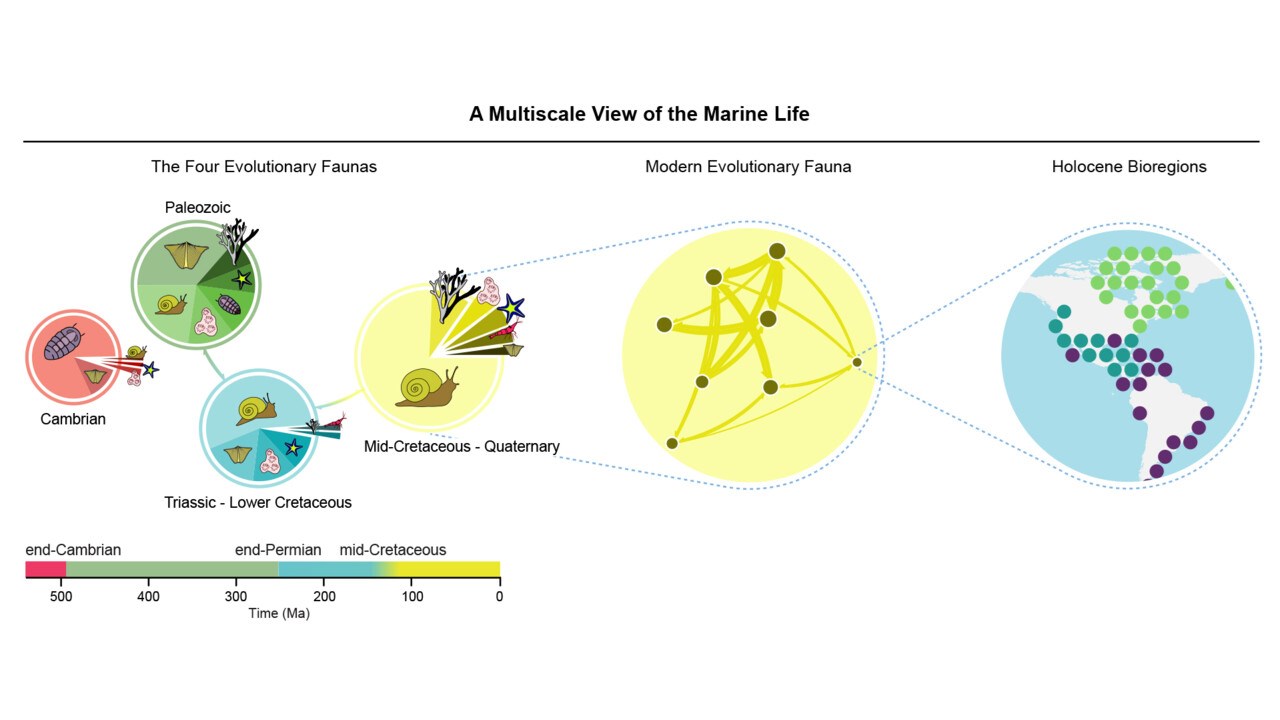A multiscale view of the Phanerozoic fossil record reveals the three major biotic transitions

Alexis Rojas, Joaquín Calatayud, Michal Kowalewski, Magnus Neuman, and Martin Rosvall
The hypothesis of the Great Evolutionary Faunas is a foundational concept of macroevolutionary research postulating that three global mega-assemblages have dominated Phanerozoic oceans following abrupt biotic transitions. Empirical estimates of this large-scale pattern depend on several methodological decisions and are based on approaches unable to capture multiscale dynamics of the underlying Earth-Life System. Combining a multilayer network representation of fossil data with a multilevel clustering that eliminates the subjectivity inherent to distance-based approaches, we demonstrate that Phanerozoic oceans sequentially harbored four global benthic mega-assemblages. Shifts in dominance patterns among these global marine mega-assemblages were abrupt (end-Cambrian 494 Ma; end-Permian 252 Ma) or protracted (mid-Cretaceous 129 Ma), and represent the three major biotic transitions in Earth’s history. Our findings suggest that gradual ecological changes associated with the Mesozoic Marine Revolution triggered a protracted biotic transition comparable in magnitude to the end-Permian transition initiated by the most severe biotic crisis of the past 500 million years. Overall, our study supports the notion that both long-term ecological changes and major geological events have played crucial roles in shaping the mega-assemblages that dominated Phanerozoic oceans.
Communications Biology 4, 309 (2021)
bioRxiv 866186
Popular summary
